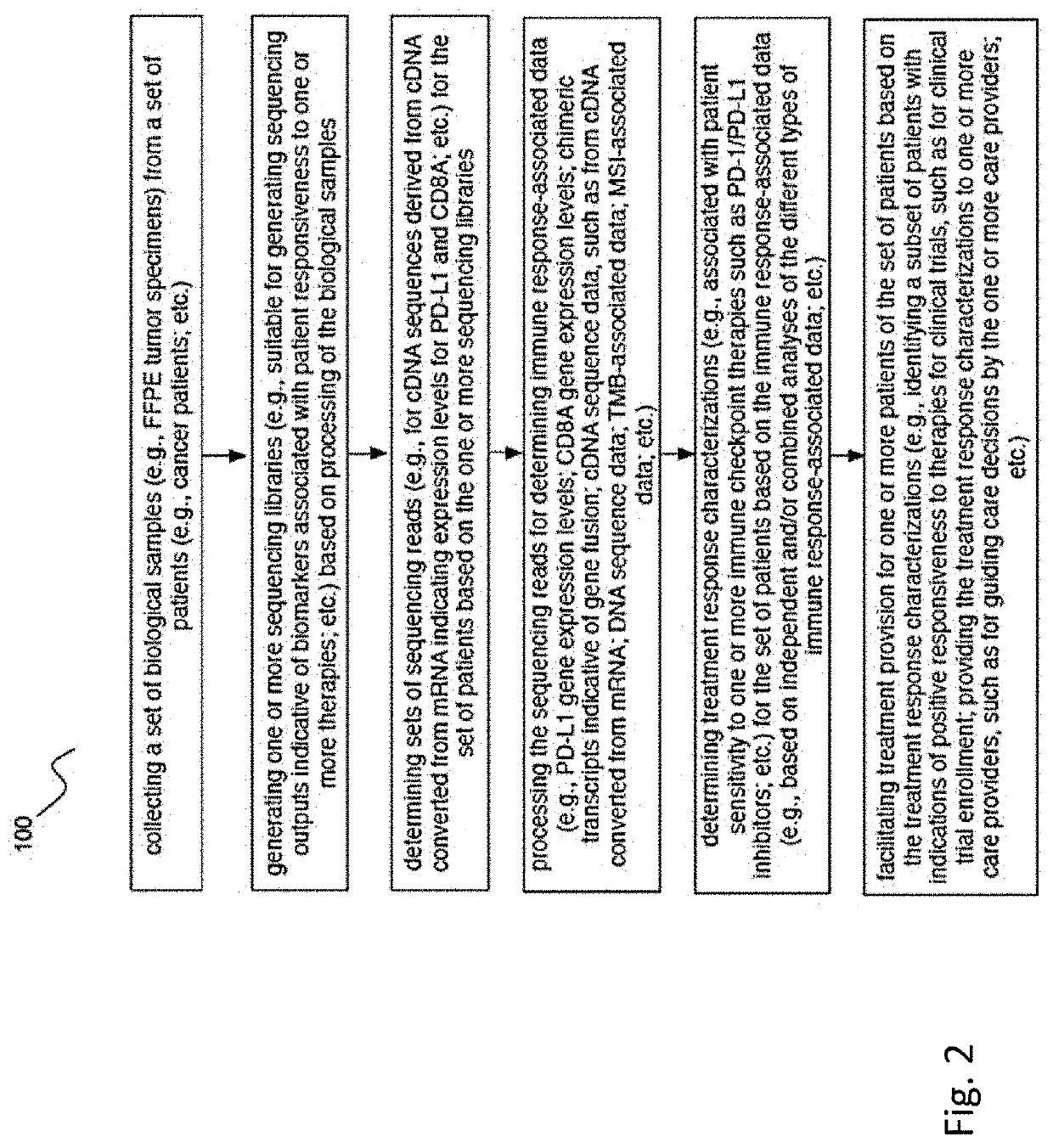Methods of detecting and treating subjects with checkpoint inhibitor-responsive cancer
a checkpoint inhibitor and subject technology, applied in the field of methods of detecting and treating subjects with checkpoint inhibitor-responsive cancer, can solve the problems of morbidity or mortality, not a perfect biomarker, and not yet led to a clear patient stratification
- Summary
- Abstract
- Description
- Claims
- Application Information
AI Technical Summary
Benefits of technology
Problems solved by technology
Method used
Image
Examples
example 1
[0114]The present disclosure utilizes a next-generation sequencing (NGS) based assay that uses targeted high throughput parallel-sequencing technology for the detection of mutations, small frame preserving insertions / deletions (indels), amplifications, deep deletions, de novo deleterious mutations, gene fusion events, microsatellite instability (MSI), tumor mutation burden / load (TMB / TML), and individual non-chimeric gene expression transcripts on a single NGS run. The StrataNGS test is a laboratory-developed test (LDT) performed in a Clinical Laboratory Improvement Amendments (CLIA) certified and College of American Pathologist (CAP) accredited laboratory and is intended to be performed with serial number-controlled instruments and qualified reagents. This test was designed to focus on identification of clinically actionable genetic variants for which there is an approved therapy or clinical trial with established proof of concept.
[0115]The StrataNGS test is a solid tumor, pan-cance...
example 2
ement
[0127]Final development work consisted of optimizing RNA expression dynamic range and quality control through both laboratory workflow and informatics refinements. Three primary changes were adopted:
[0128]1—The laboratory workflow was modified to adopt the assay manufacturer's recommendation of 20 cycles of PCR amplification for RNA quantification applications. This is in contrast to the 30-cycle amplification protocol originally employed. The change resulted in generally higher dynamic range and reduced coefficient of variation across technical replicates.
[0129]2—The set of housekeeping genes used for expression normalization was pruned from eight genes down to the three genes with the most stable expression values across all clinical and control replicate samples processed to date.
[0130]3—Confirmatory measurements are now considered when assessing Strata Immune Signature status. StrataNGS contains two independent amplicons for assessing PD-L1 expression levels; when the prima...
PUM
| Property | Measurement | Unit |
|---|---|---|
| deoxyribonucleic acid | aaaaa | aaaaa |
| color | aaaaa | aaaaa |
| TC | aaaaa | aaaaa |
Abstract
Description
Claims
Application Information
 Login to View More
Login to View More - R&D
- Intellectual Property
- Life Sciences
- Materials
- Tech Scout
- Unparalleled Data Quality
- Higher Quality Content
- 60% Fewer Hallucinations
Browse by: Latest US Patents, China's latest patents, Technical Efficacy Thesaurus, Application Domain, Technology Topic, Popular Technical Reports.
© 2025 PatSnap. All rights reserved.Legal|Privacy policy|Modern Slavery Act Transparency Statement|Sitemap|About US| Contact US: help@patsnap.com



